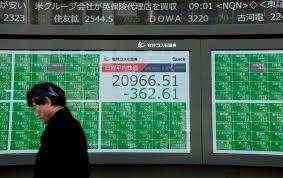

The multiplier is +1 when the close is on the high and -1 when the close is on the low. All volume is positive when +1 and all volume is negative when -1. At .50, only half of the volume translates into the period’s Money Flow Volume.

The Accumulation Distribution Line is a cumulative measure of each period’s volume flow, or money flow. A high positive multiplier combined with high volume shows strong buying pressure that pushes the indicator higher. Conversely, a low negative number combined with high volume reflects strong selling pressure that pushes the indicator lower.
The Accumulation/Distribution Indicator (A/D) vs. On-Balance Volume (OBV)
It then reaches a stage where they start exiting, which is known as distribution. The Accumulation Distribution Line is available in SharpCharts as an indicator. After selecting, the indicator can be positioned above, below or behind the price of the underlying security. Positioning “behind price” makes it easy to compare with the underlying security. Chartists can also add a moving average to the indicator by using the advanced options.

A number that is close to +1 is usually an indication of strong buying pressure while a low negative number is usually an indication of buying pressure. There are other tools that are categorized as volumes indicators. These are essential because they help to identify whether trends are supported by most traders. Trend confirmation is a pretty straight-forward concept.
Click here for a live chart with the Accumulation Distribution Line. Moving average convergence/divergence is a momentum indicator that shows the relationship between two moving averages of a security’s price. Minor Changes — Sometimes it can be difficult to detect minor changes in volume flows. The rate of change in a downtrend could be slowing, but this would be difficult to detect until the A/D line turned upward. Trading Gaps — The A/D line does not take trading gaps into consideration so these gaps, when they occur, may not be factored into the A/D line at all.
In the end, the A/D line is an effective tool in any trader’s arsenal. Accumulation Distribution tracks the relationship between price and volume and acts as a leading indicator of price movements. It provides a measure of the commitment of bulls and bears to the market and is used to detectdivergences between volume and price action — signs that a trend is weakening. A bearish divergence happens when the asset’s price creates higher tops on the chart, while the indicator is giving lower tops.
Indicators Q ~ U
There are three steps to calculating the Accumulation Distribution Line . Second, multiply this value by volume to find the Money Flow Volume. Third, create a running total of Money Flow Volume to form the Accumulation Distribution Line .
Money Flow Volume accumulates to form a line that either confirms or contradicts the underlying price trend. In this regard, the indicator is used to either reinforce the underlying trend or cast doubts on its sustainability. An uptrend in prices with a downtrend in the Accumulation Distribution Line suggests underlying selling pressure that could foreshadow a bearish reversal on the price chart.
When the Accumulation Distribution Line is rising together with the price, it confirms the uptrend. When the ADL line is falling together with the falling price it supports the downtrend. Ideally, when the price is rising while the A/D indicator is falling, it is usually a sign that there is a divergence.

The accumulation/distribution indicator (A/D) uses volume and price to assess the strength of a stock’s price trend and spot potential reversals. Close location value is used in technical analysis to determine where the price of an asset closes relative to the day’s high and low. The same concepts apply when the price closes in the lower portion of the period’s price range. Both volume and where the price closes within the period’s range determine how much the A/D will decline. Repeat the process as each period ends, adding/subtracting the new money flow volume to/from the prior total. After buying, a trader will exit the bullish trade when the A/D indicator starts to flatten.
The information provided by StockCharts.com, Inc. is not investment advice. Trading and investing in financial markets involves risk. When price continues to make lower troughs and Accumulation Distribution fails to make lower troughs, the down trend is likely to stall or fail. When price continues to make higher peaks and Accumulation Distribution fails to make higher peak, the up trend is likely to stall or fail.
Bullish and bearish divergences serve as alerts for a potential reversal on the price chart. The Accumulation Distribution Line and On Balance Volume are cumulative volume-based indicators that sometimes move in opposite directions because their basic formulas are different. Joe Granville developed On Balance Volume as a cumulative measure of positive and negative volume flow. OBV adds a period’s total volume when the close is up and subtracts it when the close is down.
On the flip side, an A/D line’s downward move signals increased selling pressure is beginning to gain a foothold. Accumulation Distribution is an enhancement of the On Balance Volume indicator. It first compares opening and closing prices to the trading range for the period, the result is then used to weight the volume traded.
Learn more about Accumulation/Distribution indicator and find out how to use it in your own trading strategy. At times, it is possible to trade divergencies, with the A/D indicator. Divergence happens when the indicator is rising while the price is falling. However, most analysts believe that this is usually not a good approach. In most periods, when the asset is rising, the A/D tends to rise. In this case, a trader can buy as long as the A/D indicator is rising.
Why is Accumulation/Distribution line useful for traders?
The multiplier in the calculation provides a gauge for how strong the buying or selling was during a particular period. It does this by determining whether the price closed in the upper or lower portion of its range. Therefore, when a stock closes near the high of the period’s range and has high volume, it will result in a large A/D jump. Step 1 — The money flow multiplier is calculated by first calculating the close and low prices. You then subtract the two results and divide it with the high minus low.
Chartists can use this indicator to affirm a security’s underlying trend or anticipate reversals when the indicator diverges from the security price. The accumulation/distribution indicator (A/D) is a cumulative indicator that uses volume and price to assess whether a stock is being accumulated or distributed. The A/D measure seeks to identify divergences between the stock price and the volume flow. Bullish and bearish divergences are where it starts getting interesting.
What is the Accumulation/Distribution Indicator?
A bullish divergence forms when price moves to new lows, but the Accumulation Distribution Line does not confirm these lows and moves higher. A rising Accumulation Distribution Line shows, well, accumulation. Based on the theory that volume precedes price, chartists should be on alert for a bullish reversal on the price chart. As such, it holds the key to the Money Flow Volume and the Accumulation Distribution Line. The multiplier is positive when the close is in the upper half of the high-low range and negative when in the lower half.
Indicators A ~ C
There are hundreds of indicators, put into several categories, available in most trading platforms. There are trend indicators like the Parabolic SAR and oscillators like the relative strength index . These indicators are used to show whether there is a trend while oscillators are used to identify key levels such as overbought and oversold. The chart above shows Southwest Airlines with the Accumulation Distribution Line peaking two months ahead of prices.